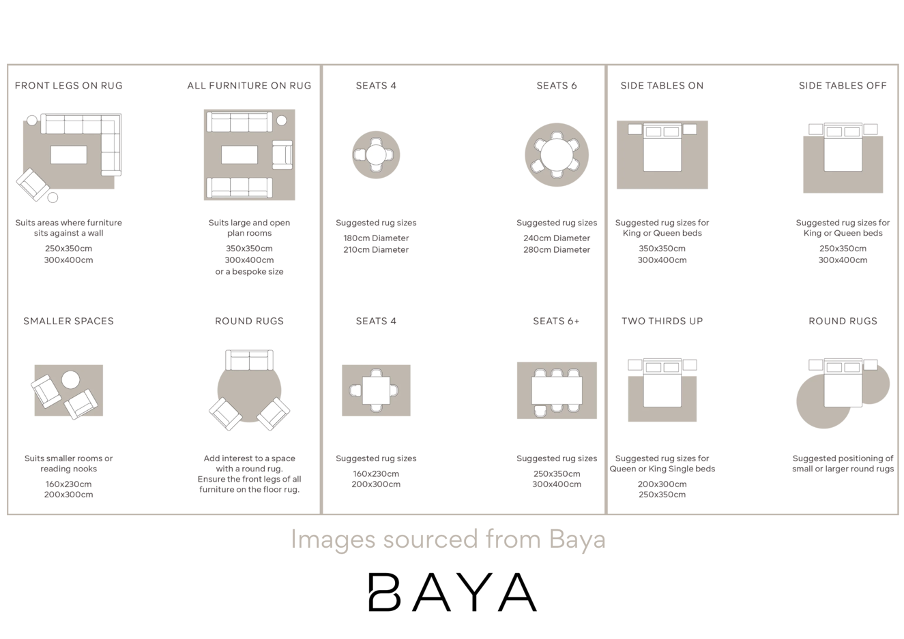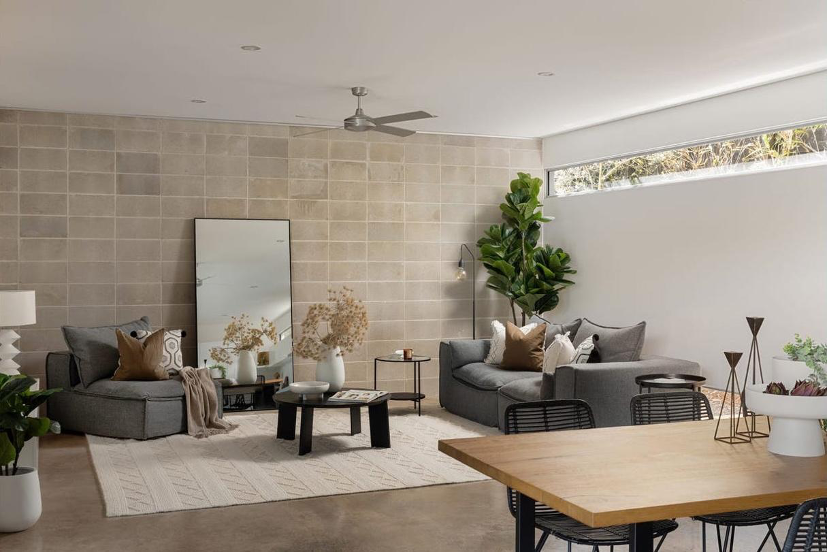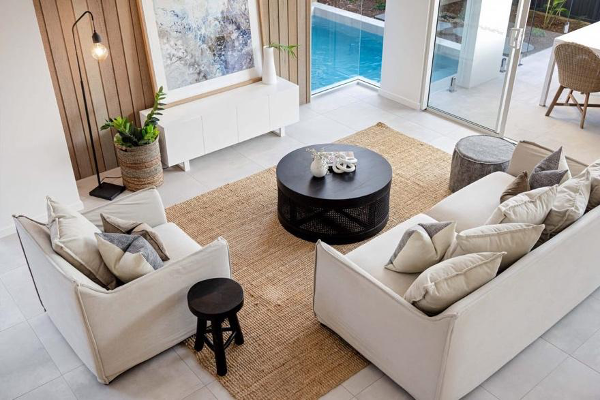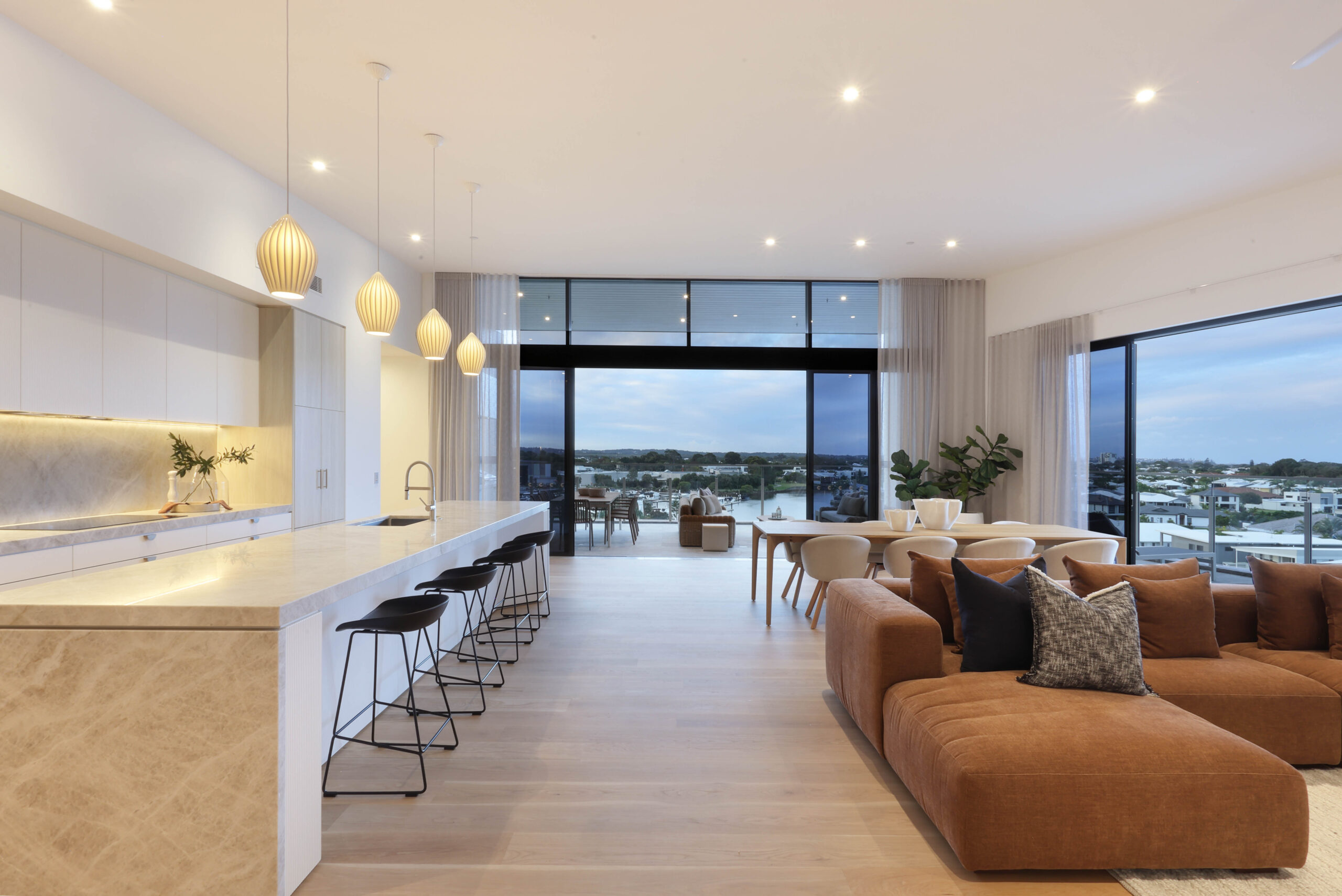Why do you Need Rugs to Style your Property?
Rugs are integral to interior design, serving as a central element that unifies furniture and brings a sense of warmth to any room. They act as an anchor, defining the space’s boundaries while also harmonising various colours and textures used throughout. Despite their transformative impact on a space, selecting the right rug can be challenging due to numerous factors. Beyond personal preference, factors such as dimensions, fibres, and suitability of the space must be taken into account. That’s where we come in—to assist you in navigating these considerations and finding the perfect rug for your space.
Positioning the Rug:
Regardless of the room’s designated purpose, the rug needs to complement the furniture within the space. For instance, a round rug may be more suitable for a dining area with a round table. If visualising a rug in your space proves challenging, consider measuring it and marking the area with tape for a clearer understanding. Remember, when it comes to rugs, bigger is often better, as smaller rugs can disrupt the room’s proportions.
Now, onto the technical details:
- When furniture, such as a sofa, is against a wall, ensure that the front legs of all furniture pieces are positioned on the rug. This applies to additional floating furniture, like armchairs, to create a sense of balance.
- In open-plan living areas, opt for a rug large enough to accommodate all furniture without feeling cramped. Leave approximately 20cm of space around the back of sofas and chairs for a balanced look.
- In bedrooms, extend the floor rug at least 50cm around the bed for a cozy appearance and soft underfoot feel when getting in or out of bed. In most cases, furniture should be placed on the rug at some point, but there are no strict limitations. Feel free to experiment with runners or round rugs beside your bed to add visual interest and enhance the room’s ambiance.

Rugs Materials and their Corresponding Rooms:
- For dining rooms, the most appropriate rug option is one with a flat weave or tightly woven threads. These types of rugs offer increased durability, easier cleaning, and are less likely to snag. To prevent chairs from catching, ensure the rug extends at least 60cm beyond all sides of the table, allowing chairs to remain on the rug when pushed back. While incorporating a rug into a dining room can enhance visual appeal, it’s crucial to prioritise practicality and select a rug colour that won’t become a nuisance. Lighter tones may accentuate soiling, whereas darker hues and patterns can help disguise stains. When it comes to stain resistance, wool rugs are naturally resilient, while hemp and jute rugs offer durability but are susceptible to staining from spills. It’s essential to avoid viscose or bamboo silk fibres in dining areas to minimise maintenance concerns.
- For living rooms, wool rugs can be an excellent choice due to their superior quality, offering exceptional comfort, durability, and style, making them a worthwhile investment. They are particularly well-suited for high-traffic areas like living rooms and are also hypoallergenic, making them ideal for households with children and pets. However, it’s important to note that in high-humidity environments, wool rugs may absorb and retain moisture and may experience shedding initially. For a more budget-friendly option similar to wool, cotton rugs are a viable alternative. They can withstand regular wear and tear and are also hypoallergenic. However, it’s essential to consider the overall ambiance of your room, as flat-weave cotton rugs may not provide the same luxurious feel. If you’re seeking a coastal-inspired aesthetic, jute rugs are an excellent choice. They are highly versatile, cost-effective, and pet-friendly. However, it’s crucial to consider the desired feel of your room, as jute rugs tend to be coarse and offer less softness underfoot due to their flat-weave construction.
- When it comes to bedroom rugs, silk rugs, which we advised against in dining rooms, can actually be a fantastic choice! While they are incredibly fine and delicate, making them best suited for low-traffic areas, they add a layer of luxury that’s perfect for the bedroom. However, it’s essential to bear in mind that silk rugs can be challenging to clean, although with proper maintenance, they can last for many years. Another type of rug worth considering is synthetic rugs blended with natural fibres. These rugs offer the benefits of both types of fibres, providing versatility and practicality. Synthetic fibres such as nylon, acrylic, polypropylene, and polyester mimic the characteristics of natural fibres but are more affordable, stain-resistant, and durable. While synthetic fibres may not always be the preferred choice, rugs with blended components may be better suited to your desired space.

How to Clean Your Rugs
Regularly vacuum your rug using low suction to prevent dust and crumbs from settling into the fibres. Avoid using a turbo or brush head attachment when vacuuming.
To prolong the life of your rug, refrain from placing it in direct sunlight, as dyed and printed products are prone to fading in high UV areas. Additionally, avoid placing dark-coloured dyed items on light flooring, as colour migration may occur. Using an underlay can help prevent colour transfer and provide added protection.
Rotate your rug regularly to ensure even wear, as regular foot traffic or exposure to sunlight may cause fading or wear in certain areas.
Cleaning spills depends on the material of the rug. It’s generally advised not to wash, bleach, dry clean, or tumble dry rugs. Instead, promptly remove spills by blotting the area with a clean white cloth and gentle detergent. Dab the area with a dry towel to remove moisture, and if stains persist, consider seeking assistance from a skilled specialist.
Occasional pop-ups may occur in handwoven rugs, which are not considered a fault but rather a side effect of the weaving process. Simply trim them or push them back through to the underside.
Using rug underlays can prevent slipping and creeping, add extra cushioning under furniture, prolong the life of your rug, and protect timber flooring from dye transfer.
With the insights shared in this journal, we trust you can integrate them into your personal interior design projects. Should you need assistance or feel overwhelmed by the process, our experienced interior designers are available to help. Feel free to visit our SHOP to browse through our collection of rug samples from Baya, GlobeWest, Armadillo, and Weave. Alternatively, if you’re in need of furniture along with a rug, let our interior designers handle everything by customising a furniture package tailored to your needs.


